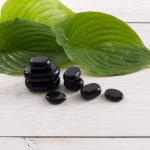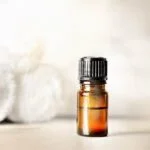French Aromatherapy, also known as aromathérapie, is a holistic healing practice that utilizes essential oils for therapeutic benefits. In this comprehensive guide, we will explore the origins and benefits of French Aromatherapy, delving into its rich history and evolution, understanding essential oils, exploring different methods and techniques, and its role in holistic wellness and healing. Whether you are a beginner or seasoned practitioner, this article aims to provide valuable insights and resources on French Aromatherapy.
The history of French Aromatherapy is deeply rooted in the traditions of France and has evolved over centuries. From its origins in ancient civilizations to modern-day practices, French Aromatherapy has continued to prosper as a popular alternative medicine. Understanding the historical context of this practice can offer valuable perspectives on its development and widespread use today.
Essential oils play a crucial role in French Aromatherapy, offering a wide range of therapeutic benefits for both physical and emotional well-being. By exploring the different types of essential oils and their properties, practitioners can gain a comprehensive understanding of how to effectively incorporate them into their holistic healing practices. Whether for stress relief, relaxation, or overall wellness, essential oils are an integral part of French Aromatherapy.
History of French Aromatherapy
French Aromatherapy has a rich history that dates back centuries, combining the use of essential oils with traditional French practices. The origins of French Aromatherapy can be traced back to the Middle Ages when aromatic plants were used for their therapeutic properties. During this time, the power of essential oils was harnessed to treat various ailments and promote overall well-being.
The Evolution of French Aromatherapy
Over time, French Aromatherapy has evolved and adapted, incorporating new methods and techniques while staying true to its traditional roots. In the 20th century, renowned chemist René-Maurice Gattefossé coined the term “aromatherapy” and conducted extensive research on the healing properties of essential oils. His work laid the foundation for modern aromatherapy practices and helped establish France as a leading authority in the field.
Contributions to Modern Aromatherapy
French Aromatherapy has made significant contributions to modern aromatherapy, influencing the way essential oils are used and integrated into holistic wellness. The French approach emphasizes the use of high-quality, pure essential oils and focuses on clinical applications, making it a popular choice for those seeking natural remedies and alternative medicine options.
Today, the history of French Aromatherapy continues to inspire new developments and innovations in the field. Researchers and practitioners are constantly exploring new ways to harness the power of essential oils for therapeutic purposes, shaping the future of aromatherapy both in France and around the world.
Understanding Essential Oils in French Aromatherapy
French aromatherapy has gained popularity worldwide for its holistic approach to health and wellness. Essential oils, the foundation of this practice, play a crucial role in French aromatherapy. Understanding essential oils is important for anyone interested in harnessing the benefits of this natural therapy.
Essential oils are concentrated extracts derived from plants, known for their potent aromatic and therapeutic properties. In French aromatherapy, these oils are used to promote physical, emotional, and mental well-being. Each essential oil has unique characteristics and benefits, making it important to understand their individual properties.
One of the key aspects of understanding essential oils in French aromatherapy is knowing how they can be used safely and effectively. Whether through inhalation, topical application, or ingestion (in some cases), essential oils must be used with caution and proper knowledge. It’s advisable to consult with a qualified aromatherapist or healthcare professional before using essential oils, especially for therapeutic purposes.
In recent years, interest in French aromatherapy has led to an abundance of information being available online. This includes comprehensive guides on essential oils and their uses, many of which can be found in the form of French aromatherapy PDFs. These resources provide valuable information on different essential oils, their benefits, as well as tips on creating blends and recipes for various purposes such as relaxation, skin care, and natural cleaning solutions.
| French Aromatherapy Essential Oils | Properties |
|---|---|
| Lavender | Calming and soothing |
| Peppermint | Invigorating and refreshing |
| Bergamot | Mood-lifting and balancing |
Exploring the Different Methods and Techniques of French Aromatherapy
French Aromatherapy encompasses a variety of methods and techniques that aim to promote well-being and healing through the use of essential oils. These methods have been developed over centuries and continue to evolve, providing a range of options for individuals seeking natural remedies for various health concerns.
Topical Application
One common method of applying essential oils in French Aromatherapy is through topical application. This involves diluting the essential oil with a carrier oil, such as almond or coconut oil, and applying it directly to the skin. Massaging the oils into specific areas of the body can help target specific ailments, such as muscle pain or inflammation.
Aerial Diffusion
Aerial diffusion is another popular technique used in French Aromatherapy, which involves dispersing essential oils into the air using a diffuser. This method allows the aroma of the oils to be inhaled, which can have various therapeutic effects on both the mind and body.
Inhalation
Inhalation is another technique commonly used in French Aromatherapy, where individuals inhale the aroma of essential oils either directly from the bottle or by adding a few drops to a bowl of hot water. This method can help alleviate respiratory issues and provide emotional support and relaxation.
These methods are just a few examples of the diverse range of techniques utilized in French Aromatherapy. Each method offers unique benefits and can be tailored to individual preferences and needs, making it a versatile approach to holistic wellness. For more information on these techniques, you can explore our French Aromatherapy PDF guide that provides comprehensive details on how to apply these methods effectively for your own well-being.
The Role of French Aromatherapy in Holistic Wellness and Healing
French aromatherapy plays a crucial role in holistic wellness and healing, offering numerous benefits for both the body and mind. From stress relief to emotional balance, this ancient practice has been used for centuries to promote overall well-being. Here are some of the key aspects of French aromatherapy in holistic wellness:
- Aromatherapy Massage: Incorporating essential oils into massage therapy can enhance the healing effects of the massage, promoting relaxation, reducing muscle tension, and boosting circulation.
- Emotional Support: Certain essential oils used in French aromatherapy, such as lavender and chamomile, have calming and soothing properties that can help alleviate anxiety, uplift mood, and promote emotional balance.
- Respiratory Health: Inhalation of essential oils through methods such as steam inhalation or diffusion can support respiratory health by clearing airways, relieving congestion, and reducing symptoms of respiratory conditions.
In addition to these benefits, French aromatherapy also plays a role in spiritual wellness by promoting mindfulness and inner peace. By creating a harmonious environment through the use of aromatic blends, individuals can experience a deeper sense of relaxation and connection with themselves.
The holistic approach of French aromatherapy addresses not only physical ailments but also emotional and spiritual well-being. For those interested in delving deeper into this subject matter, there are resources available online that offer comprehensive guides on creating your own French-inspired aromatherapy PDFs.
French Aromatherapy for Stress Relief and Relaxation
French aromatherapy has long been recognized as an effective tool for stress relief and relaxation. By harnessing the natural benefits of essential oils, this holistic practice offers a gentle and soothing way to alleviate tension and promote overall well-being. In this section, we will delve into the various aspects of French aromatherapy that make it a powerful ally in the pursuit of tranquility.
One of the key elements of French aromatherapy for stress relief is the use of specific essential oils known for their calming properties. Oils such as lavender, chamomile, and bergamot are renowned for their ability to reduce anxiety, promote relaxation, and improve sleep quality. When used in combination with carrier oils or diffused into the air, these aromatic essences can create a peaceful environment that supports mental and emotional balance.
In addition to individual essential oils, French aromatherapy also emphasizes the art of creating blends tailored to address specific stress-related concerns. By combining different oils in precise proportions, practitioners can optimize their therapeutic effects and customize their approach to relaxation. Whether through massage oils, bath blends, or inhalation techniques, these carefully crafted formulations offer a personalized path to serenity.
| Key Essential Oils for Stress Relief | Benefits |
|---|---|
| Lavender | Reduces anxiety and promotes relaxation |
| Chamomile | Calms the mind and helps improve sleep quality |
| Bergamot | Uplifts mood and reduces feelings of stress |
Aromatherapy Recipes and Blends
French Aromatherapy is not only about using essential oils for therapeutic purposes but also about creating your own blends and recipes to enhance the overall experience. Below are some tips for creating your very own French-inspired aromatherapy PDF:
1. Research and Educate Yourself: Before creating your own aromatherapy blends, it’s important to educate yourself about the properties of different essential oils and their potential benefits. This will help you create blends that cater to your specific needs, whether it’s for relaxation, stress relief, or even skin care.
2. Gather Your Essential Oils: Once you have a good understanding of essential oils, gather the ones you’d like to use in your blend. It’s important to ensure that the essential oils you choose are of high quality to maximize their therapeutic effects.
3. Experiment with Blends: Start experimenting with different combinations of essential oils until you find a blend that suits your preferences. Keep track of the measurements and combinations that work best for you so that you can create your own French-inspired aromatherapy PDF.
4. Create Your Aromatherapy Recipes PDF: Once you’ve found the perfect blends, document them in a PDF format along with information on how to use them, their benefits, and any safety precautions. This will allow you to share your creations with others or keep them for future reference.
Creating your own French-inspired aromatherapy PDF can be a rewarding experience that allows you to customize your aromatherapy practice according to your needs and preferences. Whether it’s for personal use or sharing with others, these blends can add an extra touch of authenticity and uniqueness to your aromatherapy routine.
The Future of French Aromatherapy
In conclusion, the future of French aromatherapy looks promising, with ongoing innovations and developments in the field. As interest in holistic wellness and natural healing continues to grow, French aromatherapy is poised to become an integral part of overall health and well-being.
The use of essential oils and aromatic compounds for therapeutic purposes has been practiced for centuries, and with advancements in modern research and technology, we can expect to see even more effective and targeted applications of French aromatherapy in the years to come.
One of the most exciting developments in the field is the growing body of scientific evidence supporting the efficacy of French aromatherapy for various health concerns. Researchers are conducting studies to further understand the mechanisms behind how essential oils work on a physiological level, as well as their potential interactions with conventional medical treatments. As a result, we can anticipate more evidence-based guidelines for using French aromatherapy as a complementary approach to traditional medicine.
Additionally, the accessibility of information on French aromatherapy is expanding through resources such as online courses, webinars, and downloadable materials like the French aromatherapy PDFs. These educational tools allow individuals to learn about the principles and practices of French aromatherapy from anywhere in the world, empowering them to incorporate these techniques into their self-care routines.
Overall, as this ancient practice continues to evolve and adapt to modern needs, it is sure to play an increasingly significant role in enhancing physical, emotional, and mental well-being.

Are you looking for a natural way to improve your health and wellbeing?
If so, aromatherapy may be the answer for you.




